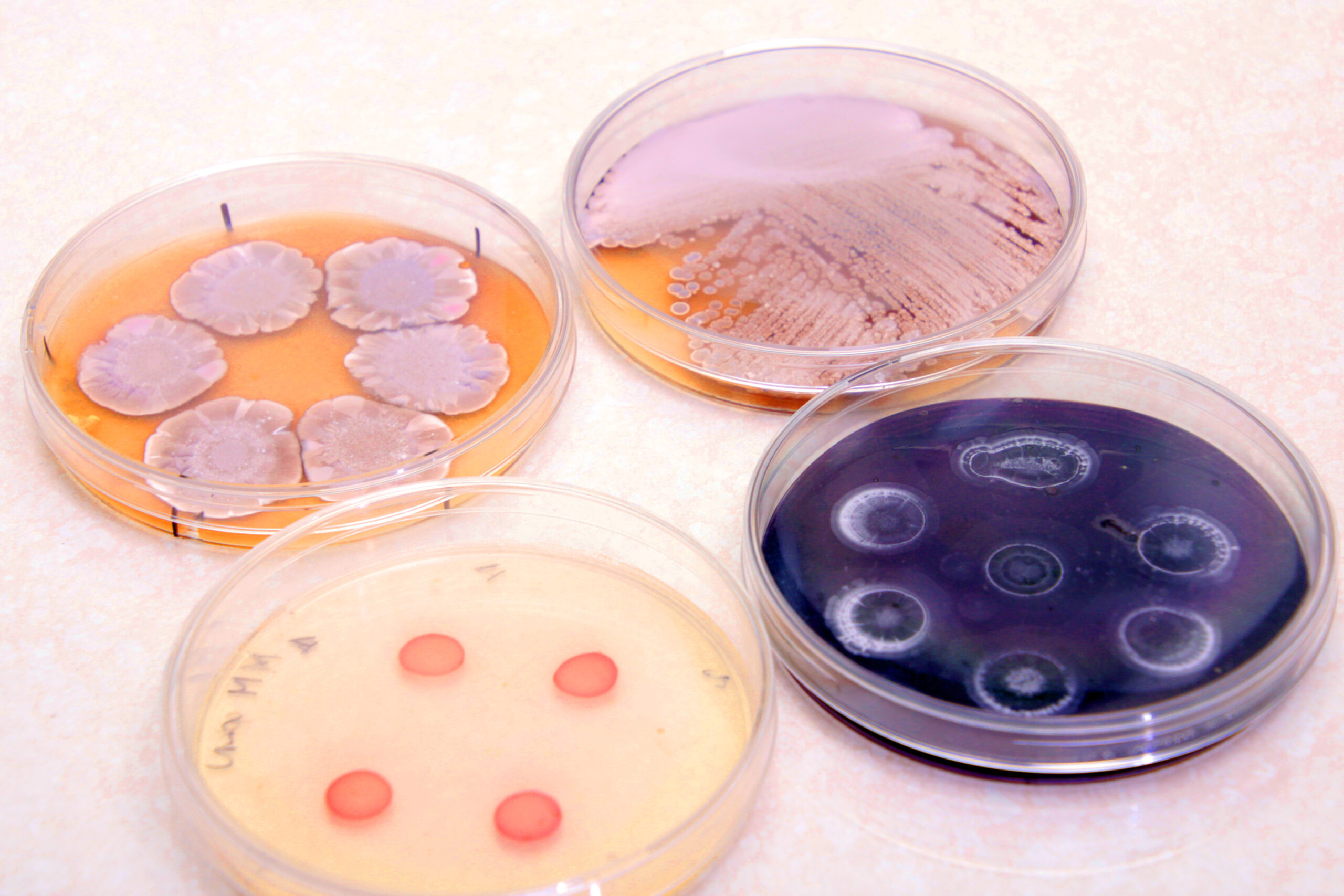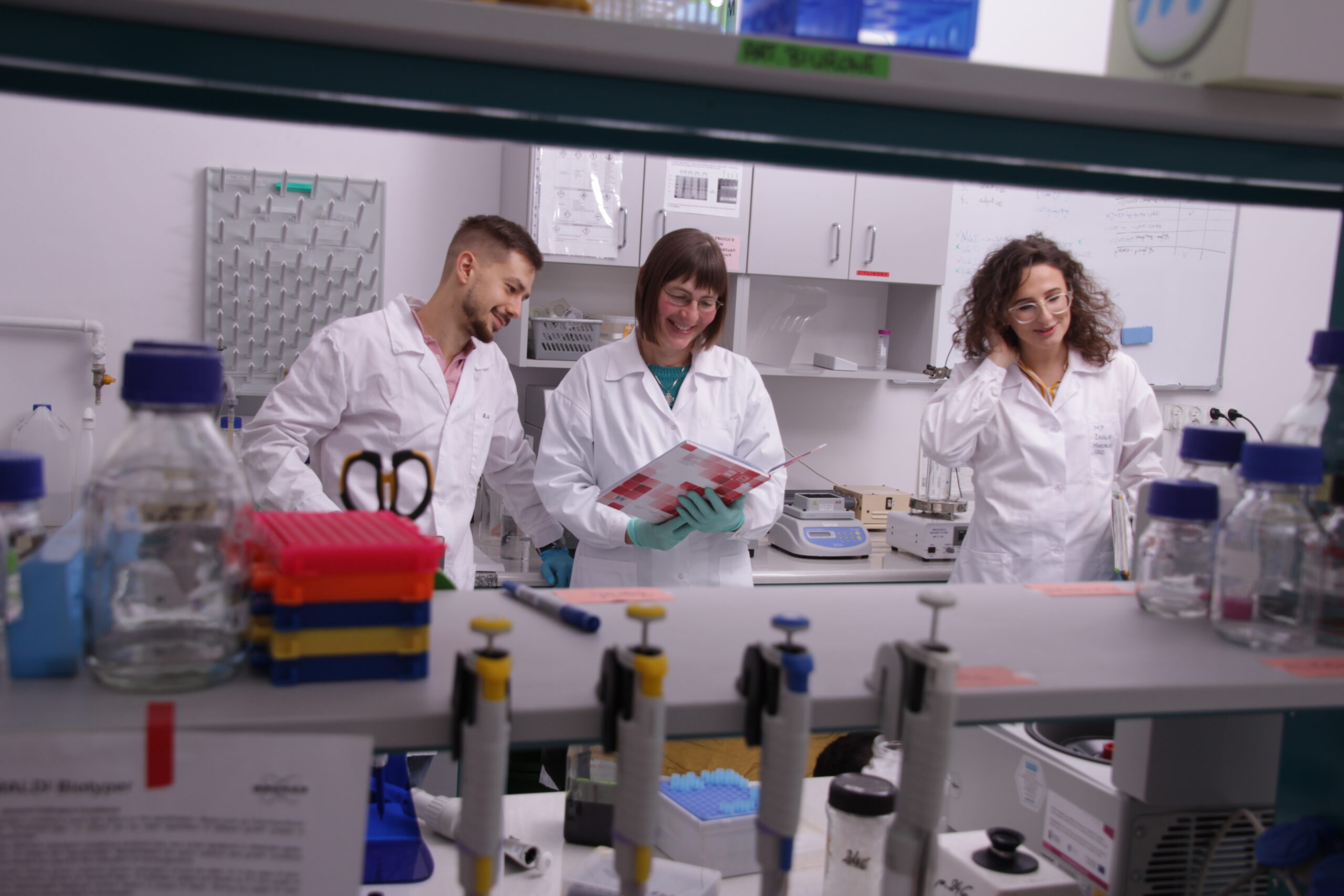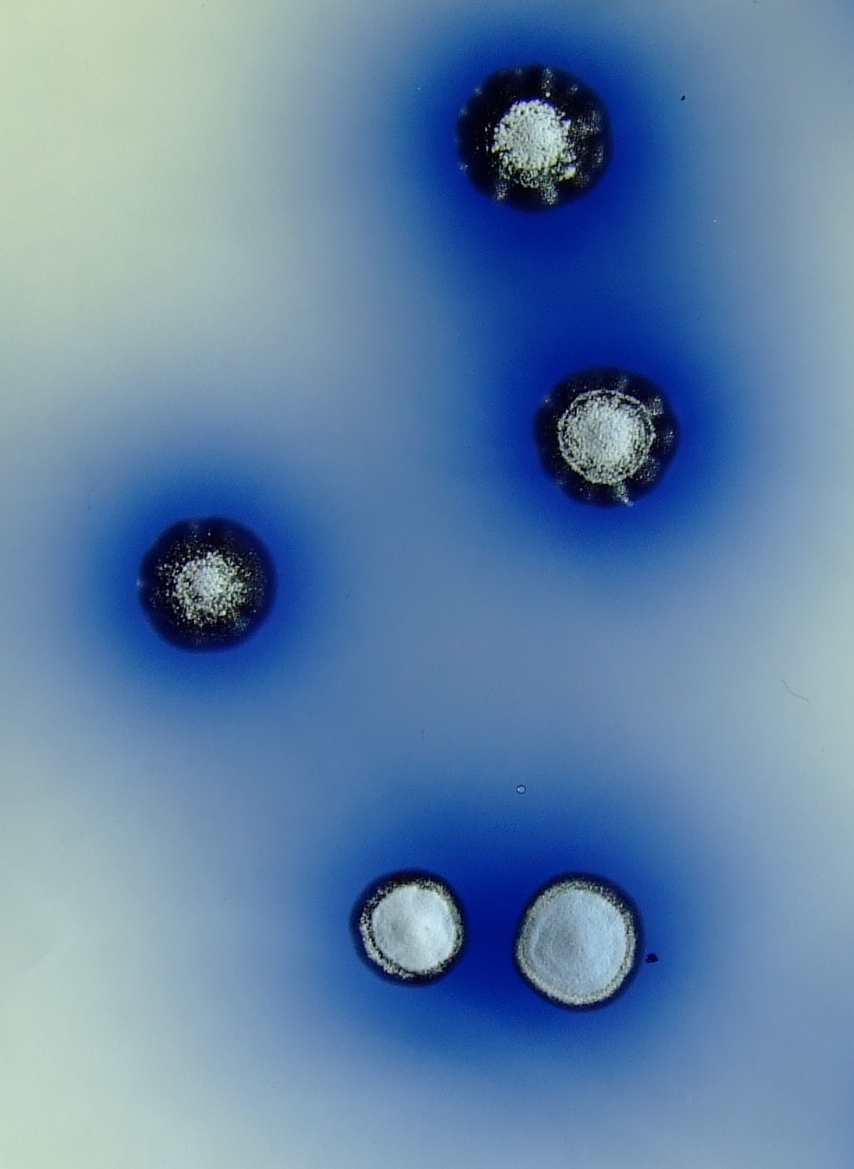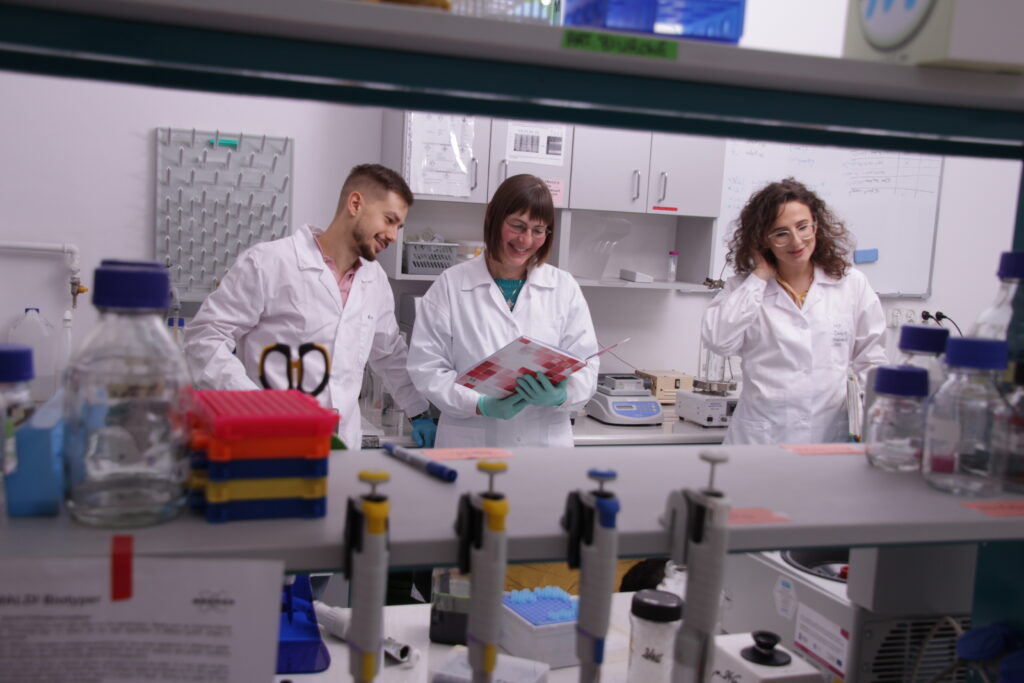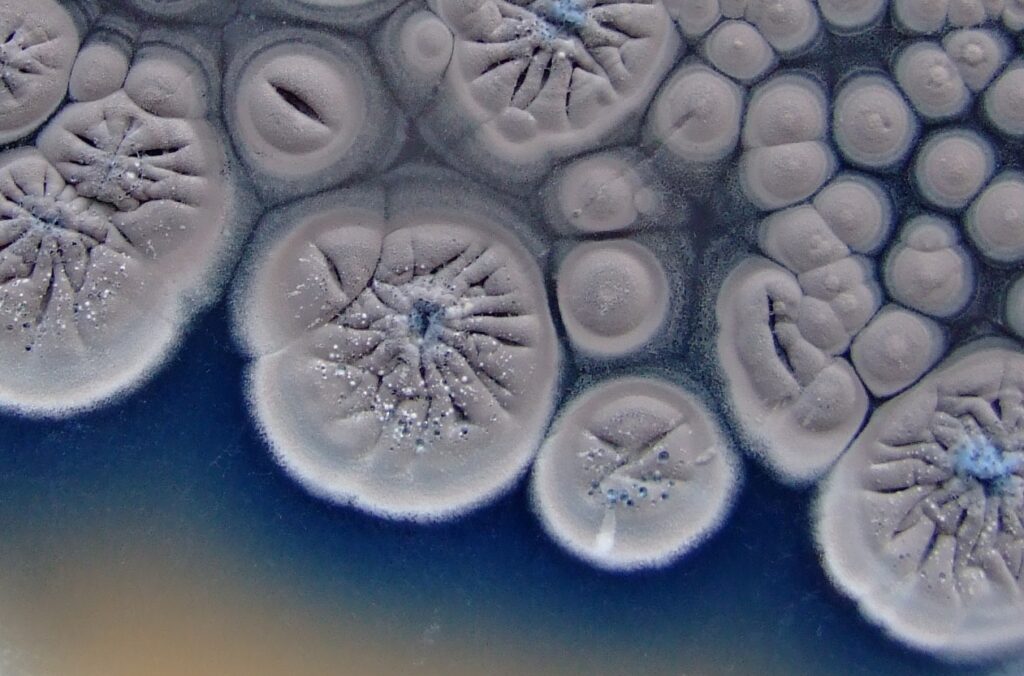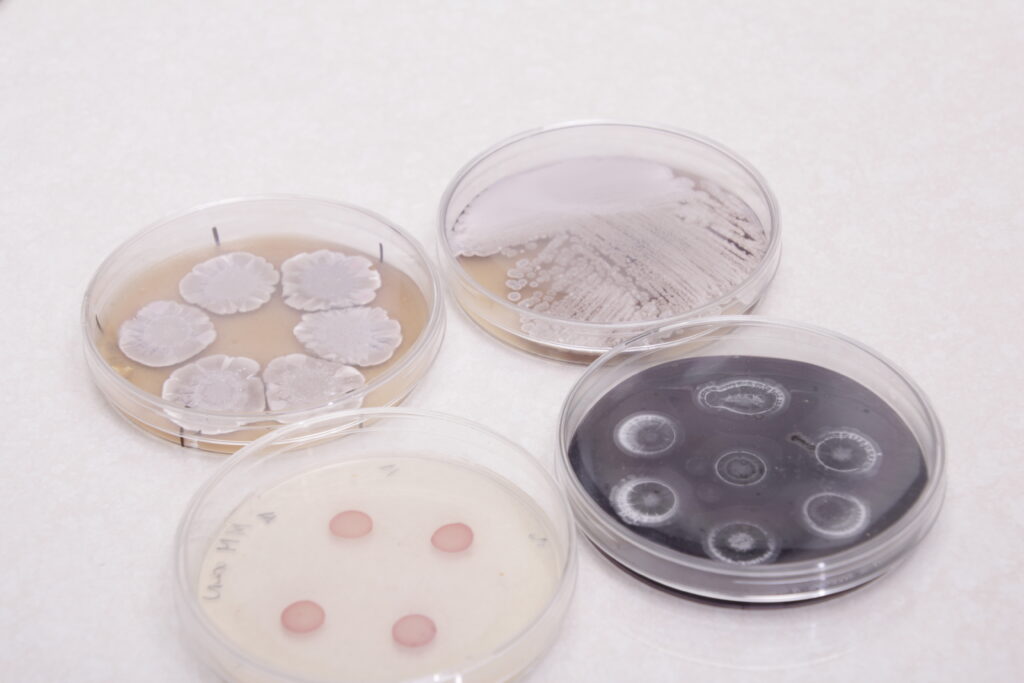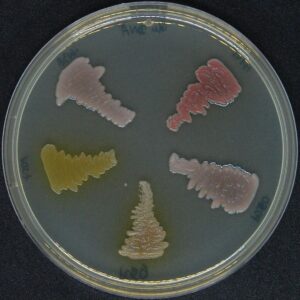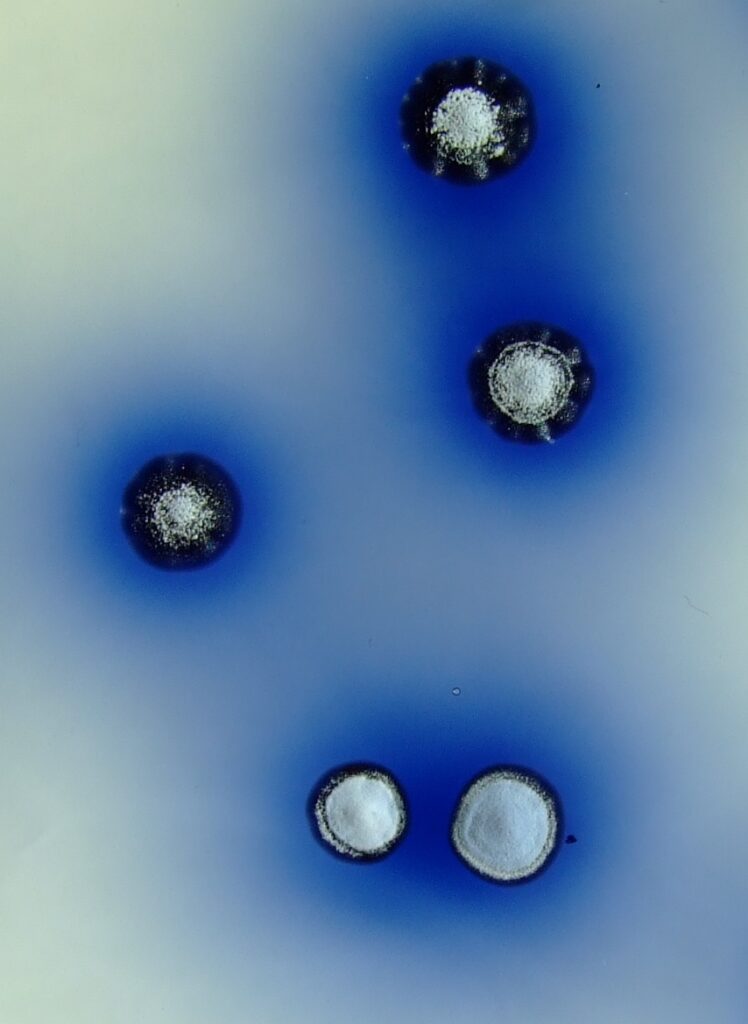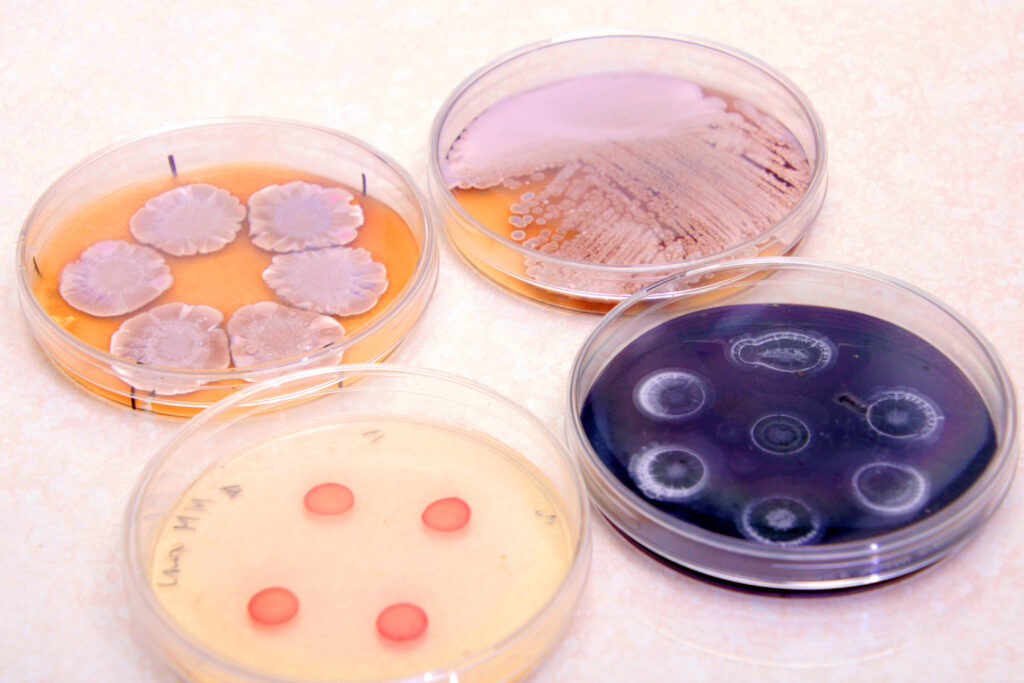In the Biotechnology Laboratory, we deal with the Streptomyces – an interesting group of bacteria with a complex life cycle, a morphology reminiscent of filamentous fungi and impressive abilities to biosynthesise secondary metabolites, which include antibiotics, anticancer compounds, immunosuppressants and many other biologically active compounds. The genome of a single Streptomyces strain can contain up to dozens of assemblies (clusters) of secondary metabolite biosynthesis genes, most of which are not expressed under laboratory conditions. We are particularly interested in the molecular basis of secondary metabolism regulation. Exploring the network of connections between different pathways is aimed at increasing the efficiency of production of valuable compounds, as well as activating the expression of ‘dormant’ biosynthetic clusters and searching for new compounds with application potential. In addition, we participate in interdisciplinary research involving innovative solutions for antimicrobial photodynamic therapy. In collaboration with the Wrocław University of Technology, EcoleNormale de Lyon and the University of St Andrews, we are focusing on understanding the molecular mechanisms of photoinactivation of pathogens and searching for and learning about the properties of new photosensitive compounds.
Research themes pursued:
Influence of intercellular communication via so-called bacterial hormones on the secondary metabolism of Streptomycescoelicolor A3(2) bacteria
Application of antimicrobial photodynamic inactivation in the control of bacterial skin infections.
Contact
Team
Secretary:
Assistants:
Specialists:
PhD students:
Most important scientific achievements
- Discovery of a previously unknown coloured secondary metabolite (coelimycin, CPK), a product of the ‘silent’ polyketide synthase of Streptomyces coelicolorA3(2) – a model species for radicle genetic studies. To describe the key role of type II thioesterase for the operation of the biosynthetic machinery of this compound.
- Describing the involvement of the CpkO and CpkN activators of the SARP family and intracellular coelimycin precursors in the regulation of expression of the CPK biosynthesis gene complex.
- Demonstrating the pleiotropic role of CpkO and CpkN proteins. To describe the function of HypR and SCO3932 proteins belonging to the GntR-like transcription factors.
Research methods
- molecular biology of bacteria
- bacterial mutagenesis, in particular of the species Streptomyces sp.
- phenotypic analysis of mutant strains (e.g. growth curves, gene expression analysis by in vivo probes, RT-qPCR and western blotting, analysis of secondary metabolite production)
- production and purification of recombinant proteins
- biomolecule interaction analyses (EMSA, footprinting, ChIP-PCR, protein cross-linking, affinity chromatography, gel filtration and others)
- analyses of the antimicrobial activity of compounds
Key equipment
- equipped molecular biology laboratories and a Class II microbiology laboratory
- class III isotope laboratory
- Multifunctional laser scanner for fluorescence, radiation and luminescence Typhoon FLA 9500 Imager (GE Healthcare)
- FPLC liquid chromatograph Akta Purifier (GE Healtcare)
- Hitachi F-7000 spectrofluorimeter
- Hitachi U-29000 spectrophotometer
- Sorvall MTX150 ultracentrifuge
- Sorvall Lynx 6000 high-speed centrifuge
Most important projects (during the last 10 years)
- Cooperation between the Polish Academy of Sciences and the Ukrainian Academy of Sciences PAN-NANU 2024. Implementation of the scientific project entitled: “Engineering the polyketide synthases to access short carboxylic acids.”
- Project: Development of a therapeutic product based on genetically modified T cells for the treatment of relapsed and refractory forms of plasmocytic myeloma: from production of a CAR receptor DNA vector to phase I/II studies. Funding: ABM, 30.04.2023 -29.04.2029
- R&D project: Innovative integrated system for field and stationary diagnosis of parasitic, bacterial and viral infestations in PKW areas – Diagnotrop 4.01.2023 – 4.01.2027
- Grant in the NCN Special Fellowship Programme for students and researchers from Ukraine without a PhD, Beneficiary: Ioanna-Yustyna Shpak, Supervisor/applicant: K. Pawlik. 1.03.2023 – 29.02.2024
- Collaboration in the framework of a research and development project: “Biopreparation consisting of bacteriophages to combat drug-resistant bacteria of the genus Klebsiella”. Project carried out by the University of Rzeszów. 1.04.2022 – 30.09.2022 Project leader: Dr Leszek Potocki.
- Database of Scientific Information Supporting Innovative Therapies – BINWIT. Operational Programme Digital Poland, Priority axis II E-government and open government, Measure 2.3 Digital accessibility and usability of public sector information Sub-measure 2.3.1 Digital accessibility of public sector information from administrative sources and scientific resources (2018 – 2021). Project leader: Krzysztof Pawlik
- Investigating the regulatory system of biosynthesis of a new polyketide antibiotic in Streptomyces coelicolor A(3)2. Ministry of Science and Higher Education, competition no 39, implementation period 2010-2014. Project leader: Magdalena Kotowska
Selected publications
- Kotowska M., Wenecki M., Bednarz B., Ciekot J., Pasławski W., Buhl T., Pawlik K. Coelimycin inside out – negative feedback regulation by its intracellular precursors. Appl Microbiol Biotechnol. 2024 108(1):531. doi: 10.1007/s00253-024-13366-1
- Piksa M., Fortuna W., Lian C., Gacka M., Samuel I.D.W., Matczyszyn K., Pawlik K.J. Treatment of antibiotic-resistant bacteria colonizing diabetic foot ulcers by OLED induced antimicrobial photodynamic therapy. Sci Rep. 2023 13(1):14087. https://pubmed.ncbi.nlm.nih.gov/37640720/
- Piksa M, Lian C, Samuel IC, Pawlik K, Samuel ID, Matczyszyn K (2023) The role of the light source in antimicrobial photodynamic therapy. Chem Soc Rev 52(5):1697-1722. https://pubmed.ncbi.nlm.nih.gov/36779328/
- Bednarz B., Millan-Oropeza A., Kotowska M., Swiat M., Quispe Haro J.J., Henry C., Pawlik K. (2021) Coelimycin Synthesis Activatory Proteins Are Key Regulators of Specialized Metabolism and Precursor Flux in Streptomyces coelicolor A3(2). Front Microbiol. 12:616050. doi: 10.3389/fmicb.2021.616050. https://pubmed.ncbi.nlm.nih.gov/33897632/
- Pawlik, K. J., Zelkowski, M., Biernacki, M., Litwinska, K., Jaworski, P., & Kotowska, M. (2021). GntR-like SCO3932 Protein Provides a Link between Actinomycete Integrative and Conjugative Elements and Secondary Metabolism. International journal of molecular sciences, 22(21), 11867. https://doi.org/10.3390/ijms222111867
- Bednarz, B., Kotowska, M., and Pawlik, K.J. (2019) Multi-level regulation of coelimycin synthesis in Streptomyces coelicolor A3(2). Appl Microbiol Biotechnol 103: 6423-6434. http://www.ncbi.nlm.nih.gov/pubmed/31250060
- Kotowska, M., Świat, M., Zarȩba-Pasławska, J., Jaworski, P., & Pawlik, K. (2019). A GntR-Like Transcription Factor HypR Regulates Expression of Genes Associated With L-Hydroxyproline Utilization in Streptomyces coelicolor A3(2). Frontiers in Microbiology, 10, 1451. https://doi.org/10.3389/fmicb.2019.01451
- Chen l., Piksa M., Yoshida K., Persheyev S., Pawlik K.J., Matczyszyn K. Samuel IDW. Flexible organic light-emitting diodes for antimicrobial photodynamic therapy. npj Flexible Electronics (2019) 3:18; https://doi.org/10.1038/s41528-019-0058-0
